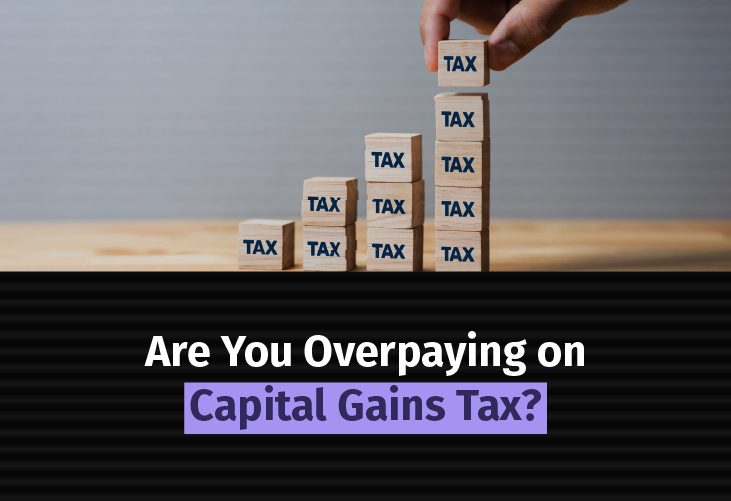Understanding Long Term Capital Gains (LTCG) is crucial for any taxpayer. So, what is LTCG? It’s the tax that you pay on profits from selling assets ranging from residential properties and vehicles to Stocks, Bonds, and even collectibles like art pieces that are held for more than a year or two.
In this blog, we will simplify how LTCG is calculated, break down the tax rates for different types of investments, and offer practical tips to help you manage your taxes smartly.
1. Long-Term Capital Gains Tax on Property, Stocks, & Mutual Funds
The taxation of capital assets in India is subject to different rates depending on the asset type and its holding period. Here is a structured breakdown:
- Holding Period
| Asset Type | Long-Term Holding Period | Definition | ||
| Equity-Related Assets | More than 12 months
|
– Equity Shares
– Equity-Oriented Mutual Funds – Unit-Linked Insurance Policies – Units of Business Trusts – Non Convertible Debentures – SGBs |
||
| Other assets
|
More than 24 months
|
– Real Estate (land or property)
– Unlisted Shares – Debt Mutual Funds – Hybrid Mutual Funds – Gold and Precious Metals – Antiques – Cryptocurrencies |
- Taxability
The Finance Act 2024 has provided tax relief to individuals on their long-term future investments and removed the Indexation benefit, which is effective from July 23, 2024:
| Asset Type | Current Tax Rate | Current Exemption limit | Note |
| Listed Equity Shares or Equity-Oriented Mutual Funds | 12.5% | ₹1.25 lakh | STT must be paid on purchase and sale to avail exemption. |
| Other Assets | 12.5% | NA | Tax rate reduction applies to assets such as real estate, unlisted shares, etc. |
Here’s a comparison of the capital gains tax rates and exemption limits on various assets before the amendment in July 2023:
| Asset Type | Current Tax Rate | Current Exemption limit | Note |
| Listed Equity Shares or Equity-Oriented Mutual Funds | 10% | ₹1 lakh | STT must be paid on purchase and sale to avail exemption. |
| Other Assets | 20% | NA | Tax rate reduction applies to assets such as real estate, unlisted shares, etc. |
Relief for Property Owners
Property owners have two options for calculating long-term capital gains tax when selling their immovable property, they can choose any one option that results in a lower tax liability:
- Option 1: Calculate LTCG tax at 20% with the benefit of indexation, which adjusts the purchase price for inflation.
- Option 2: Calculate LTCG tax at a flat 12.5% without using the benefit of indexation.
Who is eligible for these two options?
If you are selling a property that you purchased before July 23, 2024, you have the option to avail these benefits for both residential and commercial properties.
2.Computation of Long-Term Capital Gain
Let us understand how to calculate tax on LTCG using a basic formula and an example.
LTCG = Sale Price – Cost of Acquisition – Cost of Improvement – Transfer Costs
- Sale Price: The amount you receive from selling the asset.
- Cost of Acquisition: The price you originally paid to buy the asset.
- Indexed Cost of Acquisition: Original cost of acquisition is adjusted for inflation using the Cost Inflation Index (CII).
- Cost of Improvement: Cost for improvements done on assets
Note: Indexation is applied only to real estate assets.
- Transfer Costs: Expenses related to selling the asset such as brokerage fees, and legal charges.
Example 1: Calculating LTCG for a Debt Mutual Fund
Joy invested in an ICICI Prudential debt mutual fund in 2015 for ₹2,00,000 and sold it in 2024 for ₹3,50,000. Here’s how to calculate your LTCG:
LTCG = Sale Price – Cost of Acquisition
LTCG = ₹3,50,000 – ₹2,00,000 = ₹1,50,000
Since asset type is debt oriented mutual fund so tax exemption of ₹1,25,000 cannot be availed.
LTCG Tax payable = 12.5% of ₹1,50,000 = ₹18,750
Example 2: LTCG on Real Estate with Indexation Benefits
Joy bought a piece of land in 2015 for ₹15,00,000 and sold it in 2024 for ₹40,00,000. We will calculate the LTCG with indexation since the land was acquired before July 23, 2024.
- Cost Inflation Index (CII) Values:
- CII for 2015 = 254
- CII for 2024 = 363
- Indexed Cost of Acquisition: Cost of Acquisition × (CII of Sale year / CII of Purchase year)
[₹15,00,000 × (363/254) = ₹21,43,700]
- LTCG Calculation: Sale Price − Indexed Cost of Acquisition
[₹40,00,000 − ₹21,43,700 = ₹18,56,300]
- LTCG Tax: Real estate is taxed at 20% with indexation benefit:
[20% of ₹18,56,300 = ₹3,71,260]
Here, indexation significantly reduces the taxable gain, lowering his tax liability.
Example 3: LTCG on Real Estate Without Indexation
For properties purchased after July 23, 2024, the indexation benefit is not available, and the tax rate is a flat 12.5%. Let’s calculate the LTCG tax without indexation using the same sale scenario:
- LTCG = Sale Price – Cost of Acquisition
[₹40,00,000 – ₹15,00,000 = ₹25,00,000] - The LTCG tax at a rate of 12.5% would be:
[12.5% of ₹25,00,000 = ₹3,12,500]
Here, the LTCG tax is higher due to the absence of indexation benefits.
Tax Saving Options on LTCG
There are a few exemptions available to reduce long-term capital gains, such as:
- Investment in Residential Property: If you sell your residential property and proceeds from long-term capital gain are invested in another residential property within the specified timeline, then the amount of capital gain or cost of new property, whichever is lower, shall be exempted under Section 54 of Income Tax Act.
Timeline:
The new property must be bought either one year before or two years after the sale of the original property, or
It must be constructed within three years from the date of transfer of the original property.
Note: The maximum amount of deduction will be ₹10 Cr.
- Investment in Residential Property from capital gains on sale of assets other than residential property: All the conditions including timeline and limit to claim deductions are same as above except that the capital gain should be from the transfer of assets other than residential property under section 54F of Income Tax Act.
- Investment in Bonds: If you invest the long-term capital gains from the sale of immovable property in specific bonds (e.g., NHAI, REC, or other bonds specified by the central government) within six months. Then exemption is available up to a maximum amount of Rs.50 lakh under section 54EC of Income Tax Act.
Note: These bonds have a lock-in period of five years. If bonds are sold before completion of 5 years, then exemption will be treated as capital gain in the year of sale.
Conclusion
By understanding how to apply updated tax rates, utilise indexation benefits, and take advantage of available exemptions, you can maximise your tax savings and optimise financial growth. Smart tax planning not only reduces liabilities but also enhances your overall financial strategy.
A qualified financial advisor can help you in computing the long term capital gains correctly. To optimise your taxes, download the 1 Finance app and book a consultation with a qualified financial advisor for a seamless, hassle-free tax planning experience.






